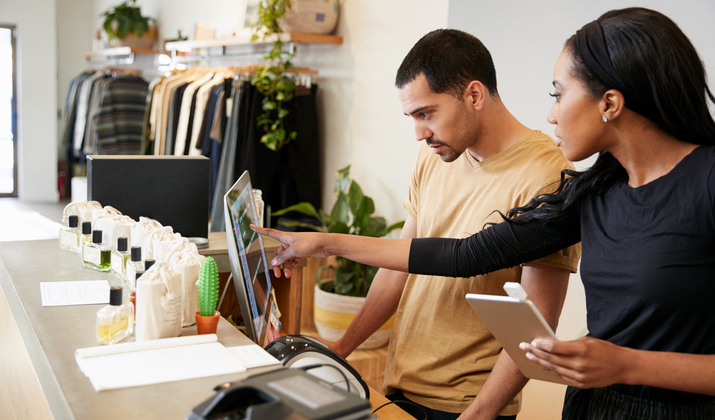How Brick & Mortar Stores Are Winning Back Customers
With the rapid increase in e commerce industry and the inevitable use of smartphones, the brick and mortar retailers are struggling to bring the customers back to their stores.
Even though online sales contribute to a relatively smaller percentage of the total retail revenue, it is enough to create a flutter amongst the physical store owners, which is justifiable.
E-stores score high over the physical stores. The ease of browsing, customer reviews, one tap checkout coupled with ample payment modes, all within your comfort zone, is hard to resist and likely to trend upwards in the coming years as well.
Online-shopping lovers typically use the physical stores to compare prices, check out the actual products or even try them before turning to their ‘online counterparts’ to make a purchase. This works great as they not only find the products at a discounted rate but also get it delivered at their doorsteps.
But the idea of being reduced to merely a ‘showroom’ is not that appealing to the brick and mortar retailers, especially when they have invested huge amounts into renting a place, setting up the store, paying for the stocks, hiring and training of their staff.
While a few hope for the best and still guide these bargain seekers around their stores, many retailers have started devising techniques to get the customers to buy from them. With several technological advancements and right marketing strategies, luring and winning the consumers back to the physical store, is entirely doable.
Studies have shown that more than 65% of the consumers prefer to ‘touch and feel’ the product or even check for suitability or fitting (in case of apparels or shoes) before buying. This is one of the obvious advantages that brick and mortar stores have over online shopping or e-stores and will remain so.
How Brick & Mortar stores are using digital technologies

Apart from providing exceptional customer services through their courteous and knowledgeable in-store staff, retailers are adopting several digital technologies as well to improve the overall in-store experience for their customers.
For instance –
Many brands make use of Beacons to detect a customer’s phone if it’s within a specific range of their physical store. They can then send a timely ‘sales message’ to the phone, which can encourage or tempt the customer to take an action immediately and maybe buy the product.
Ipads are integrated with the store’s inventory management system and are installed within the changing rooms of the in-store. Customers can use it to request for different sizes or colors and call the sales associate for help. They can check reviews and ratings about the products too.
Interactive screens allow the customers to browse through the stores for more product options, rather than asking for assistance.
Interactive storefronts enable the shoppers to browse and order from a storefront touchscreen any time of the day or week, even if the store is closed. And while ordering they can even schedule a free 1 hour delivery to anywhere in the city and pay right from their phone upon delivery.
Brick-and-mortar stores have always lacked in accumulating customer habits and preferences, due to which they were unable to tailor their promotional efforts for the right consumer segment.
However, with the advent of app technology, retailers are now using in-store mobile apps to replicate online shopping experience. It enables them to build a consumer database for sending personalized notifications based on the customer’s shopping interests.
The app allows the customers to compare the best price for a product, either sold online or other stores, by merely scanning the product codes though the phone.

Bill payments can be made onsite by scanning a barcode or QR code through the phone camera or by just tapping the phone against an electronic reader. And just like in online delivery, some retailers go to the extent of delivering the product at the customer’s residence once they pay through the app.
Customers are encouraged to use the app, through which they can earn and redeem loyalty points or coupons. They can also avail special discounts specific to their GPS locations or purchase history.
Using geolocation marketing, retailers can promote the stores nearest to the customer’s location, by sending them online updates.
These apps work great for several industries like footwear and apparel, white goods or even grocery. Customers can easily track the product inventory in terms of availability, quantity, size, color or any other relevant parameter, beforehand. They can even add products to the cart or wish-list for a potential sale in future, which definitely works for the retailers.
How Ebizon helped Mobilistic with an in-store mobile app.
Mobileistic a New York based company launched in 2002, has grown to become one of the largest sellers of wireless accessories in US, and has incorporated the mobile in-store technology to boost their business.
Mofluid by Ebizon, helped Mobileistic in developing a rich, interactive e-commerce iPad app with a hierarchical 3-level deep navigation, that enables the users to quickly browse and access the products with ease. Optimized with the latest functionalities within their app, this retail chain with over 300 stores, now offers a superior mobile shopping experience.
Mobile app technology narrows the gap between the brick and mortar and online stores, and is beneficial to both retailers and customers, as it combines the in-person customer service with the convenience of shopping from home.